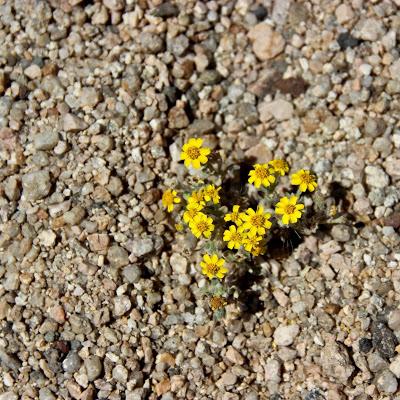
It was like being young again. On the road, driving fast, light fading, finally a sign—the wrong sign. Missed the turnoff 40 miles back. Turn north anyway, drive fast, light fading, hit the brakes, back up, take a narrow deep-rutted two-track winding through creosote scrub with no place to turn around. Keep driving, wondering, light fading, rocky hill visible ahead, suddenly arrive and stop. Flat open area, fire ring, fragrance of creosote bush, tiny car lights snaking through the valley below. Far to the east a golden glow edges the jagged mountain crest and the full moon rises—unexpected, unplanned, perfect.And look what the morning brought:
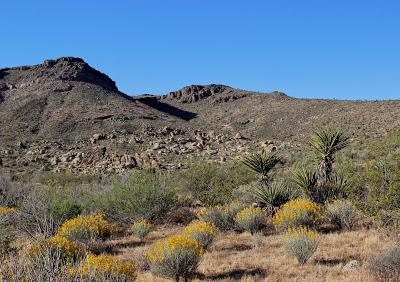
Morning at the base of Van Winkle Peak.
The desert was in bloom—not the highly-touted “super bloom” of early spring annuals, but rather shrubs covered in flowers. All the moisture had benefitted them too. Most looked familiar, probably because 40 years ago we novice botanists stood before them chanting in Latin. For a moment I hesitated, caught by the reflex. But how absurd! There’s no requirement to name plants to enjoy them.Of course I recognized creosote bush—I would have recognized it just by its wonderful fragrance (early travelers struggling to cross the Mojave before dying of thirst probably would have disagreed with “wonderful”).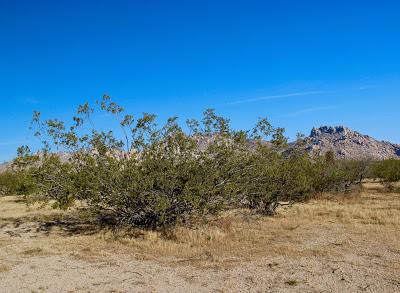
Vigorous creosote bush almost ten feet tall.
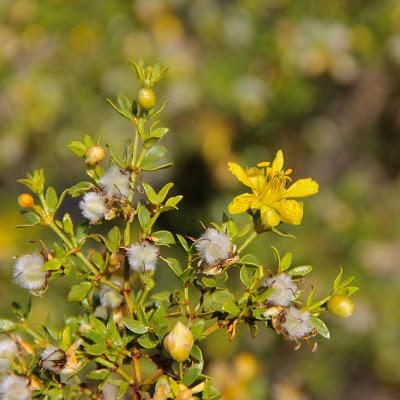
Note resinous aromatic leaves.
A yellow-flowered green-stemmed shrub was the main source of color—desert senna, Senna armata, as I later learned from a plant display at the park Visitor Center. It’s a member of the pea family.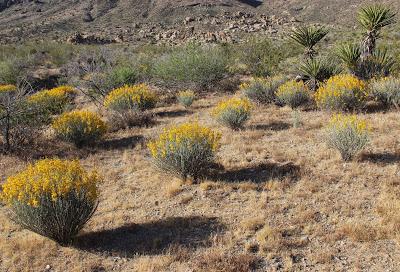
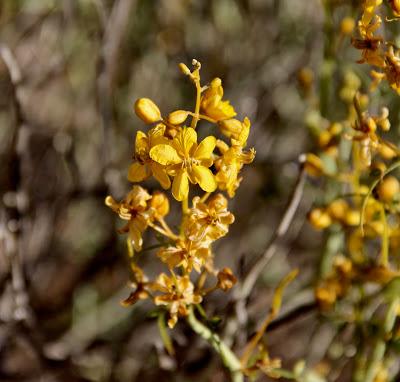
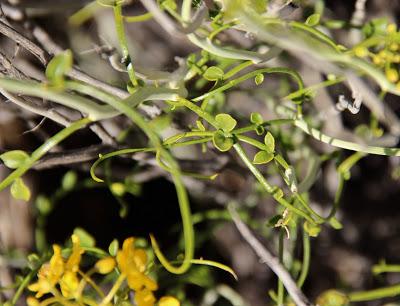
Look close – compound leaves!
Next I found a wild buckwheat (Eriogonum sp.) thick with flowers. This genus is easy to recognize, with clusters of small six-parted flowers, but species are often tough. Wild buckwheats are common and diverse in California deserts. During C. Hart Merriam’s Death Valley Expedition of 1891, botanists Frederick V. Coville and Frederick Funston collected 25 species!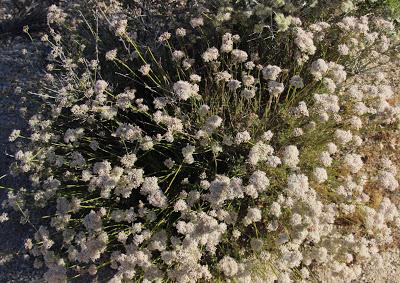
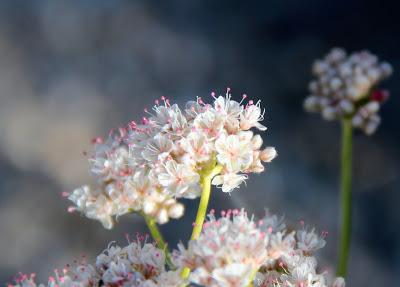
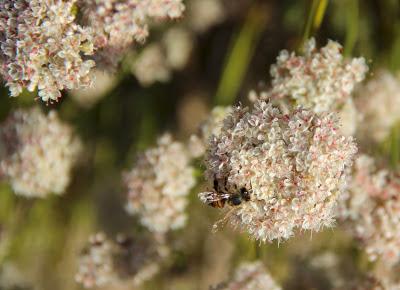
Lucky shot—a preoccupied pollinator stumbled into my field of view.
Next to the wild buckwheat was a dead shrub … or so I thought until violet spots caught my eye. This plant’s a total mystery. I don’t know the genus nor the family. It has sharp-tipped twigs, and the stems, leaves and buds are covered in fine gray hairs. Any ideas?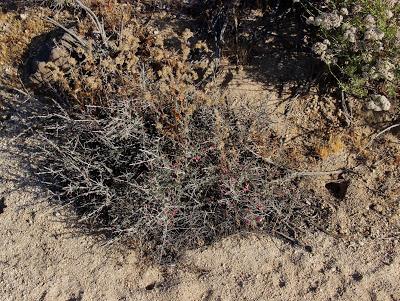

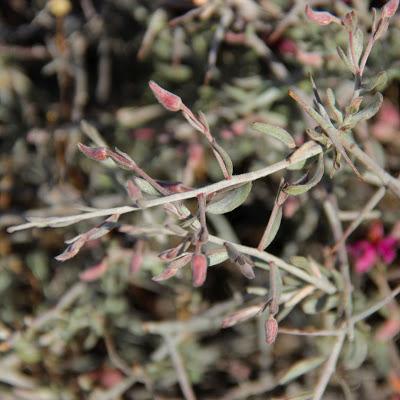
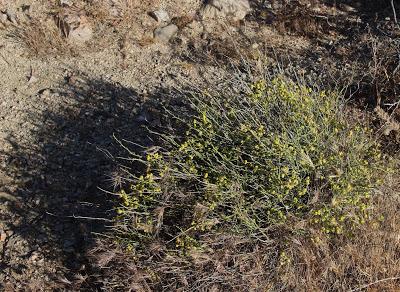
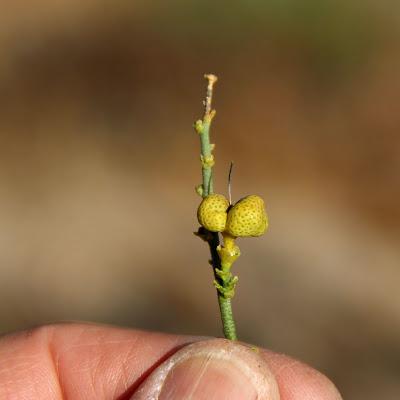
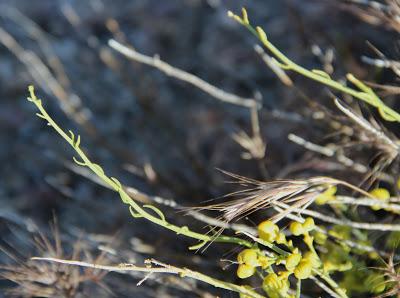
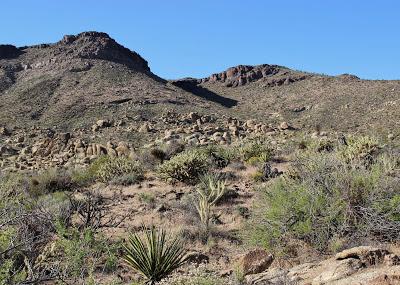
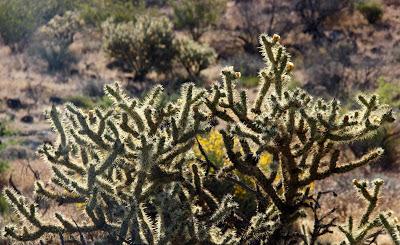
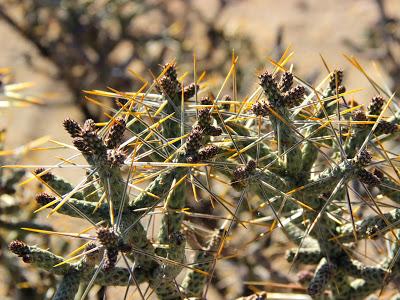
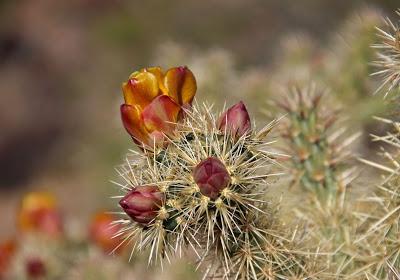
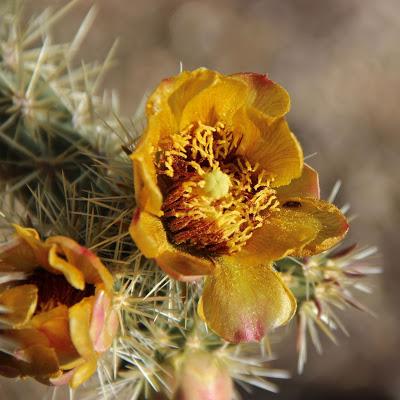
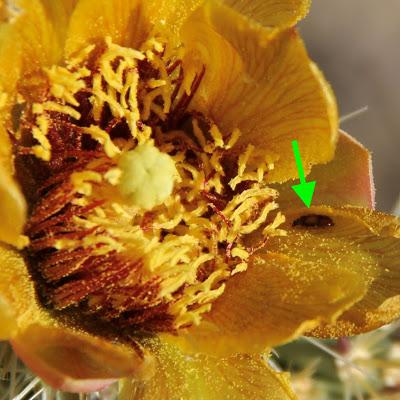
What is it?
A few annuals were hanging on, the last of the super bloomers. This little beauty was the most common. It’s a member of the aster (sunflower) family.